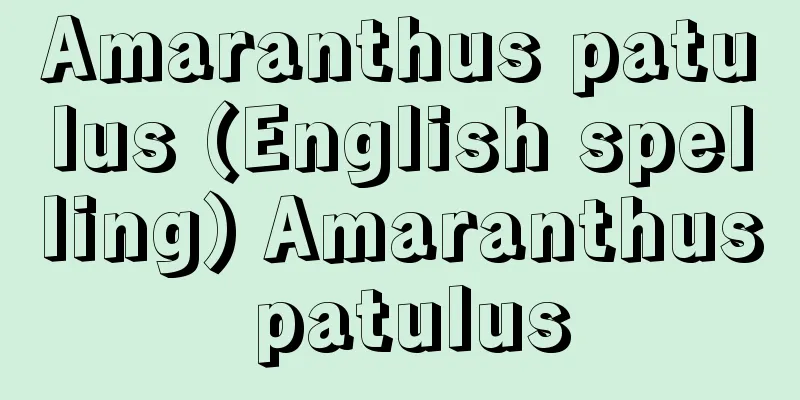Fei Xiaotong - Fei Xiaotong

|
Chinese anthropologist, sociologist, and social activist. Born in Wujiang County, Jiangsu Province. Studied under Wu Wenzao (1901-1985) in the Department of Sociology at Yenching University in Beijing, and studied under SM Shirokogorov (1889-1939) at the Graduate School of Sociology and Anthropology at Tsinghua University. Conducted research in Kaixuangong Village, his hometown, in Wujiang County, and used the materials he gained to complete his doctoral thesis under the supervision of Malinowski at the London School of Economics in England, publishing Peasant Life in China (1938). After returning to China, he served as a professor of sociology at Yunnan University, Tsinghua University, and other universities. In 1944, he joined the China Democratic League. After the founding of the People's Republic of China, he served as vice president and professor of anthropology at the Central University for Nationalities, a representative to the National People's Congress, vice chairman of its Standing Committee, and a member of the Central Standing Committee of the China Democratic League, and then chairman of the same. He was criticized for his role in the Anti-Rightist Movement of 1957-1958, and was later ousted during the Cultural Revolution, but was reinstated at the end of the 1970s. He was instrumental in founding the Chinese Association for Sociological Research (1979) and the Institute of Sociology of the Chinese Academy of Social Sciences (1980), and served as the institute's first director. His interests ranged from detailed "community studies" based on anthropological fieldwork to research on ethnic minorities, but he maintained an applied scientific belief that social research was useful for the development of Chinese society. He created a stir by proposing the concept of the "Chinese nation as a pluralistic and unified entity" (the "Chinese nation" is diverse yet unified). [Masahiro Nakajima] "Peasant Life in China," translated by Senba Yasuo and Shioya Yasuo (1939, Seikatsusha)" ▽ "Fei Xiaotong, Upbringing System: Family and Society in China, translated by Yokoyama Hiroko (1985, University of Tokyo Press)" ▽ "Miniature Paintings of Rural China: Records of a Rural Village 1936-82," translated by Kojima Shinji et al. (1985, Kenbun Publishing)" ▽ "The Multi-dimensional and Integrated Structure of the Chinese Nation," edited by Fei Xiaotong, translated by Nishizawa Haruhiko et al. (2008, Fukyosha)" ▽ "Fei Xiaotong: Sociology of Ethnic Self-Reflection," written by Sasaki Mamoru (2003, Toshindo)" ▽ "Fei Xiaotong and Sociology in Revolutionary China," by R. David Arkush (1981, Harvard University Press) [References] |Source: Shogakukan Encyclopedia Nipponica About Encyclopedia Nipponica Information | Legend |
|
中国の人類学者、社会学者、社会活動家。江蘇(こうそ/チヤンスー)省呉江県に生まれる。北京(ペキン)の燕京(えんきょう)大学社会学系で呉文藻(ごぶんそう)(1901―1985)のもとに学び、清華大学社会学・人類学系大学院ではシロコゴロフS. M. Shirokogorov(1889―1939)に教えを受ける。故郷呉江県の開弦弓村で調査を行い、その資料をもとにイギリスのロンドン・スクール・オブ・エコノミックスにてマリノフスキーの指導のもと博士論文を完成、『Peasant Life in China』を出版する(1938)。帰国後、雲南大学、清華大学などで社会学教授を務める。1944年に中国民主同盟に入党。中華人民共和国成立後は、中央民族学院副院長・人類学教授、全国人民代表大会代表、同常務委員会副委員長、中国民主同盟中央常務委員、同主席などを歴任。1957~1958年の反右派闘争によって批判され、さらに文化大革命で失脚したが1970年代末に復活。中国社会学研究会の結成(1979)、中国社会科学院社会学研究所の設立(1980)に尽力、同研究所初代所長を務めた。人類学的フィールドワークに基づいた詳細な「社区研究community studies」から少数民族研究まで関心は多岐にわたるが、社会研究が中国社会の発展に有用であるとする応用科学的信念をもち続けた。「中華民族多元一体格局」(「中華民族」は多様でありながら統一性をもつ)という概念を提示して話題をよんだ。 [中嶋聖雄] 『仙波泰雄・塩谷安夫訳『支那の農民生活』(1939・生活社)』▽『費孝通著、横山廣子訳『生育制度――中国の家族と社会』(1985・東京大学出版会)』▽『費孝通著、小島晋治他訳『中国農村の細密画 ある農村の記録 1936―82』(1985・研文出版)』▽『費孝通編著、西澤治彦他訳『中華民族の多元一体構造』(2008・風響社)』▽『佐々木衛著『費孝通――民族自省の社会学』(2003・東信堂)』▽『R.David Arkush『Fei Xiaotong and Sociology in Revolutionary China』(1981・Harvard University Press)』 [参照項目] |出典 小学館 日本大百科全書(ニッポニカ)日本大百科全書(ニッポニカ)について 情報 | 凡例 |
Recommend
prévôt (English spelling) prevot
…A city governed by a government (characterized b...
Cucumber grass - Cucumber grass
A biennial plant of the family Boraginaceae (APG ...
Ten Ancient Collections - Shukojisshu
A collection of illustrated catalogs of ancient t...
Cuban Movies
...However, it is said that the film's popula...
Minuten Gedachtnis (English spelling)
...Korsakoff's syndrome causes severe memory ...
The Teng Mao Rebellion
A peasant revolt that took place in China's M...
Tuna fishing boat
...The main fishing boats are explained below. (1...
Philosophy of History - Rekishi shite tugaku (English spelling) philosophy of history English
It is a philosophical consideration of history, a...
Academy of American Franciscan History
…Their subsequent activities probably covered the...
Swedish Gymnastics - Swedish Gymnastics
A system of gymnastics invented by Swedish gymnast...
Pericycle
…In amphibian capillaries, there are cells with p...
Thai Nguyen (English spelling)
The capital of Thai Nguyen Province in northern V...
"Tripod Head" - Undaihen
…His style of poetry is praised as clear and pure...
Rock Around The Clock
… Rhythm and blues is a type of popular music for...
Phimai Temple - Phimai Temple
The ruins of a Khmer temple in Phimai, 270 km nort...









![Setana [town] - Setana](/upload/images/67cc043ab5706.webp)